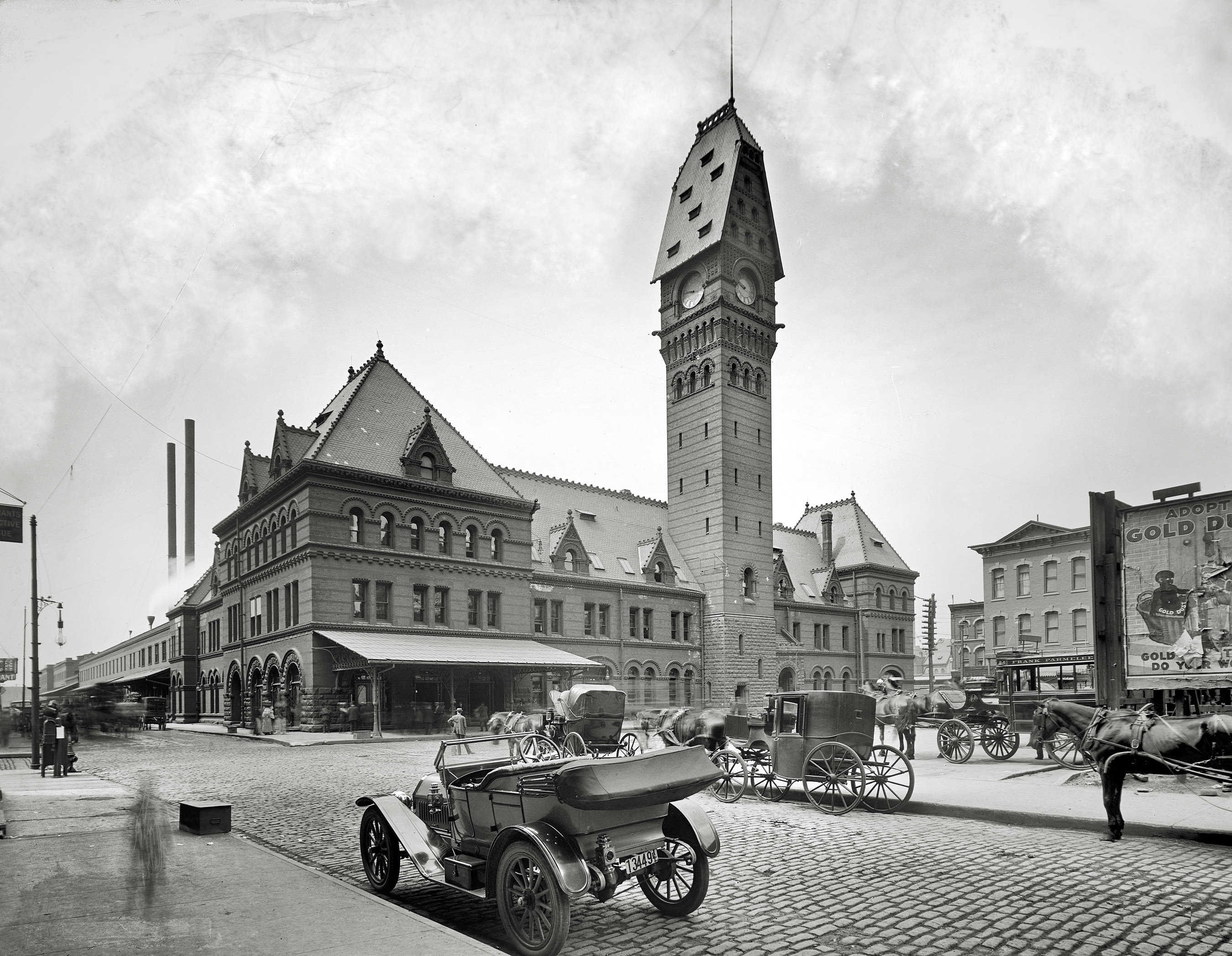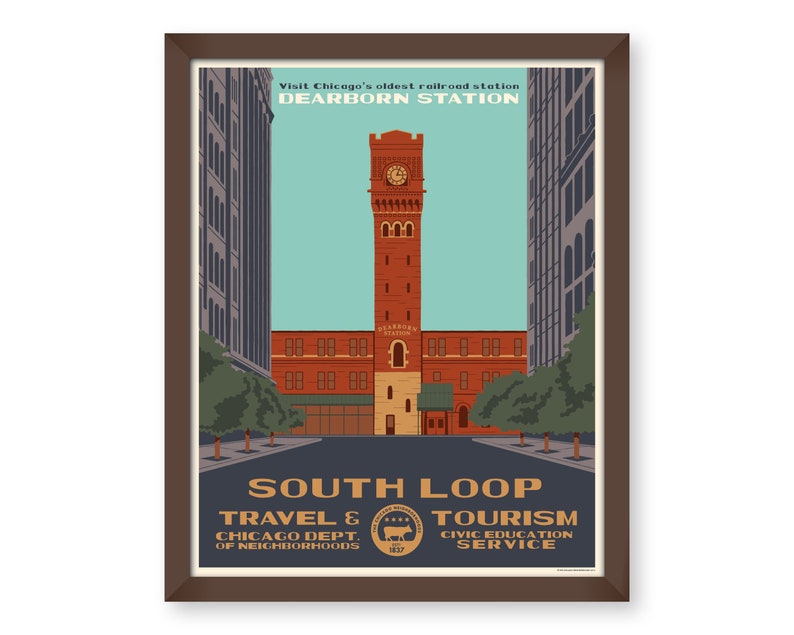Sunday, March 26, 2023
Friday, March 24, 2023
We Love Dearborn Station - So Here is a brief part of it's Origin and History
Chicago's Dearborn Station is a historic transportation hub that has played a significant role in the city's history and development. Built in 1885, it was the first railway station in Chicago to serve multiple rail lines. Over the years, the station has been home to numerous railroad companies and played a crucial role in the growth of the South Loop neighborhood.
The Beginnings of Dearborn Station
The idea for Dearborn Station came from the Chicago and Western Indiana Railroad, which was looking for a way to consolidate its passenger operations in the city. At the time, the railroad had several different terminals scattered throughout Chicago, which made it difficult to manage and inefficient for passengers. The company decided to build a new, centralized station that would allow it to streamline its operations and provide a better experience for passengers.
In 1881, the Chicago and Western Indiana Railroad purchased a site on Dearborn Street between Polk and Taylor. The site was chosen because it was located near the heart of the city and was easily accessible by both rail and streetcar. The station was designed by Cyrus L.W. Eidlitz, a prominent New York architect who was known for his work on train stations and other public buildings.
Construction on the station began in 1883 and was completed two years later. The building was an impressive structure that featured a central clock tower, a large waiting room, and multiple platforms for trains. The station was also unique because it served several different rail lines, including the Chicago and Eastern Illinois Railroad, the Michigan Central Railroad, and the Wabash Railroad.
Impact on the South Loop Neighborhood
The construction of Dearborn Station had a significant impact on the South Loop neighborhood. Prior to the station's construction, the area was largely residential, with a few factories and warehouses scattered throughout. However, the station brought new businesses and commerce to the area, including hotels, restaurants, and retail stores. The station also served as a gateway to the city for many travelers, which helped to boost the local economy.
The station also played a crucial role in the development of Chicago's transportation network. The station's central location and access to multiple rail lines made it a key transportation hub for the city. It allowed passengers to easily transfer between different rail lines and made it easier for goods to be transported throughout the city and beyond.
Throughout the years, Dearborn Station continued to evolve and change. In the early 1900s, the station was expanded and renovated to accommodate more passengers and trains. However, as air travel became more popular in the mid-20th century, the station's importance began to decline. In 1971, the station was closed and its operations were consolidated with other rail yards in the city.
Today, Dearborn Station still stands as a reminder of Chicago's rich history and its importance in the development of the city's transportation network. While the station is no longer used for its original purpose, it has been repurposed for other uses, including retail stores, restaurants, and offices.
For example, UChicago Medicine has an urgent care facility located at Dearborn Station for convenient same-day care for the entire family. The American Montessori Academy South Loop also has a location at Dearborn Station offering year-round programs for children aged 8 weeks to 9 years old. The popular Jazz Showcase is also located in Dearborn station and so is Bar Louie.
It is one of our favorite buildings in the neighborhood and a unique monument to the history of the neighborhood. One of our favorite prints is this one:
You can find that at the following etsy site if you want to buy one for your place.
Dearborn Station is an important part of Chicago's history and has had a significant impact on the development of the South Loop neighborhood. The station's central location and access to multiple rail lines helped to make it a key transportation hub for the city, and its construction brought new businesses and commerce to the area. While the station's operations have since ceased, it remains an important part of Chicago's architectural and cultural heritage.
Sources for additional reading:
Wednesday, March 22, 2023
Kdot (Kendrick Lamar) is Coming to Lolla!
Lollapalooza season is officially on us....sorta.
Well at least we know who is going to be gracing Chicago and the Sloop with their presence during the weekend of August 3rd-6th:
While we get older the music doesn't age (maybe with the exception of Red Hot Chili Peppers). A lot of these acts are new to us, but surprisingly I'm familiar with more than some of the recent lineups. Like most, we'll be digging in over the spring/summer to scope out who we're liking.
Please share acts that you're excited about so we can give them a listen.
While it may be a bit obvious to be excited about the the top of the list performer, Kendrick Lamar is a unique voice in hip hop and continues to push the envelope. This is one of the best still doing his thing and arguably in his prime - so should be a recipe for a great festival show.
We asked for some help from our favorite AI friend to give us the latest on Kendrick Lamar's latest album for those who may not know:Kendrick Lamar's newest album Mr. Morale & The Big Steppers has been received positively by critics. According to NME, it is a "cathartic, soul-baring autobiography". The album sees Lamar overcome "writer's block" to triumph with a collection on which his observational skills go into overdrive.
The album has been praised for its differences from previous albums. According to Pitchfork, "Mr. Morale & The Big Steppers" is a thorny double album featuring everyone from Kodak Black to Portishead’s Beth Gibbons. It also explores vulnerability, the challenges of newfound fatherhood and his marriage.
We've heard the album compared to a therapy session and judging by this video from the album we can see why:
Monday, March 20, 2023
The Next Phase of Sloopin
Hi fellow Sloopers!
Long time no talk - we've taken a bit of a hiatus to think through some aspects of this site and what the future could be. Apologies for the abruptness of this stop.
I don't have much to reveal today, but the plan is to restart posting a bit more often. There is a lot of great content about our neighborhood and city being put out into the world and we hope we can be a portal into the vastness of the interwebs helping you all sift through the noise.
An ask to you or anyone who you might know. There is an underlying idea we have for local media, news and information. We haven't nailed it down yet, but if you like to write, take pictures, record videos, do tech wizardry, help with startup ideas or have cash you're looking to invest, please reach out to sloopin@gmail.com. If you're a South Loop business looking to continue to foster a relationship with the neighborhood also reach out.
For this idea to blossom, the reality is I'm going to need some help from our community - the great people of the South Loop who I call neighbors.
Sunday, March 19, 2023
Checkout Chicagohenge 2023 Starting Tomorrow
Twice a year, during the spring and fall equinoxes, the rising and setting sun lines up with Chicago’s east-west street grid, creating spectacular photo opportunities as the sun is framed within Chicago’s skyline. The spring equinox is Monday.Take a look to the west shortly before sunset, according to Michelle Nichols, master educator for the Adler Planetarium. The effect is visible for about the week before and after the equinox. And if you miss it, wait another six months for the next one. The fall equinox happens Saturday, Sept. 23, 2023.Where is the best place to see it?The city’s rigid east-west grid pattern means that just about any east-west street works, but a street without many obstructions would be best. Skyscrapers in the Loop will offer some of the choicest framing opportunities.
The article gives a great overview of why this phenomenon exists and why people call it Chicagohenge (...stonehenge in the UK).
So head out to the streets at sunrise or sunset and check it out.







:quality(70)/cloudfront-us-east-1.images.arcpublishing.com/tronc/LZSCNP74AFFOPHYTWE2MEHCDOM.jpg)